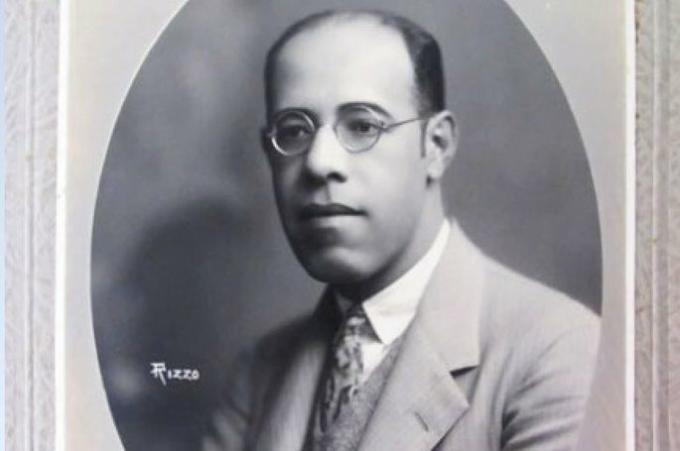The Scream is one of the most famous paintings in the history of Western art. It was made in 1893 by the Norwegian artist. Edward Munch, which used oil paint, tempera and pastel chalk on cardboard.
The composition measures 91 x 73.5 cm and is currently at the National Gallery in Oslo, Norway.
It is considered a masterpiece, as the artist managed to translate the feeling of anguish and loneliness.
Table Analysis The Scream
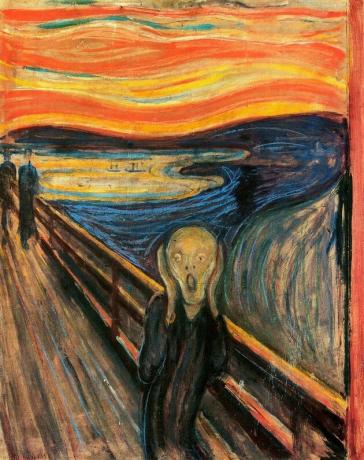
The Scream it is a painting that shows a person who looks terrified at the viewer. The setting is a bridge and there are two other people who walk without noticing the despair of the main character, who is shown with wavy and shadowy features.
Furthermore, the figure has neither male nor female features and represents any human being.
It is speculated that this work is a self portrait of the artist with his very stunned emotional life.
In 1892, Munch recorded in his diary what would be the impetus for the production of the work.
He was walking with two friends along the sidewalk, the sun was setting, the sky suddenly turned red, I stopped; tired, I leaned on the railing - over the city and the dark blue sea I saw only blood and tongues of fire - my friends they continued to walk and I remained trapped in the same place, trembling with fear - and I felt that an endless screaming penetrated the whole nature.
On this screen, Munch presents us with a being surrounded by fear and anxiety. The figure almost merges with the landscape, but distances itself from the figures that appear in the background.
The chosen colors are vibrant, however, the feeling that remains is of extreme sadness.
Detailed analysis of The Scream
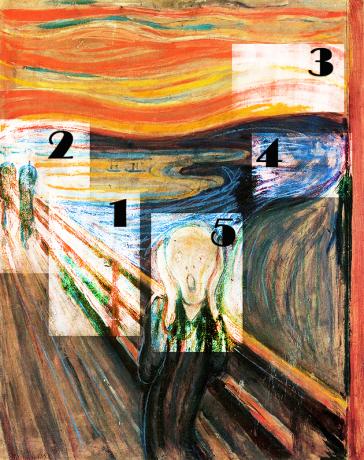
1. The bridge
This element symbolizes the crossing a difficult time in a person's life.
In addition, the straight lines passing through the frame connect the central figure to the two characters in the background, forming a vanishing point for the viewer's gaze and highlighting the face of the screaming being.

2. People
These figures are presented in elongated forms, with straight lines - just like the bridge - which makes a counterpoint with the main character, formed by sinuous strokes.
In this way, it is possible to notice a contrast in the scene, as if these people belonged somewhere else.

3. the red sky
The choice of red tones to portray the sky suggests anguish and reinforces the threat feeling that the main character experiences.
There is a suspicion that the artist was inspired by a scene witnessed in Oslo, when the sky turned red due to the eruption of the Krakatoa volcano, in 1883.

4. the village
It is possible to notice that the place where the scene takes place is close to a village, on the outskirts of Oslo. Looking closely, we can even see the outlines of a church. However, everything seems very distant and hazy.

5. The figure as a mask
The emblematic character was painted without a detailed face, just suggesting a human face.
It is likely that the artist was inspired by a Peruvian mummy exhibited at the Museum of Man in Paris. Edvard Munch may have visited this museum while living in France.
In the current context, the figure served as an inspiration for the American horror film series entitled Scream - translated into Portuguese as Panic - produced between 1996 and 2011.
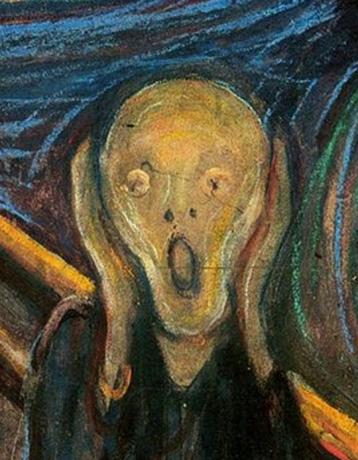
The Scream and the Expressionist Movement
The screen was a big influence on the creation of the expressionism, European avant-garde movement. It is one of the most important paintings of the period, being a reference when talking about the slope.
It was the first entirely expressionist production painted by Munch. In it, the artist's concern was to convey emotions, leaving formal balance aside.
Expressionism was a trend that highlighted the existential and social problems of the beginning of the 20th century. Unlike the impressionism, whose interest was in capturing the lights and colors, leaving human feelings in the background.
versions of The Scream
Edvard Munch produced several versions of the work. With different techniques and materials, the artist expressed himself in other ways using the same composition.
Below, we have, from left to right, the first and best known version of the work, made in 1893; then the second version, also from 1893; the third was produced two years later, in 1895; finally, the fourth is from 1910.
There is also a lithograph made in 1895. In this technique, it is possible to reproduce the same design several times by printing on paper.

Theft of the work The Scream
This work by Munch is extremely valuable and in February 1994 one of his versions was stolen from the National Gallery in Oslo.
After the robbery, the thieves sent a ransom demand demanding $1 million. The amount was not paid and the painting was later recovered in a police action.
In 2004 another version of The Scream was taken from munch museum along with the work Madonna - also from Munch. This time there was no ransom demand and the painting was found in 2006. However, there was serious moisture damage and screen burns.
Who was Edvard Munch?

Edward Munch was born in Norway on December 12, 1863. He had a troubled emotional life, witnessing the death of his mother and older sister in childhood.
He once wrote:
Ever since I was born, the angels of anguish, restlessness, and death have been by my side (...) They stalked me when I went to sleep and terrified me with death, hell, and eternal damnation. Sometimes he woke up at night and looked around: was he in hell?
He was raised by his father, a military man who became a fervent Christian and was quite strict in imposing discipline on his children. Edvard was also in poor health. Asthmatic, he had an introverted personality.
Influenced by his father, he entered engineering in 1879, but used his free time to draw. In 1880, at the age of 17, the young man decides to become a painter and enrolls at the Royal School of Arts and Crafts in Christiania, much to his father's displeasure.
From then on, Munch would become an important name in art history, being one of the most influential artists of the late nineteenth and early twentieth centuries.
The artist died in 1944 in Ekely, Norway.
Other works by artist Edvard Munch
Munch has a great production. With more than 60 years of career, he used oil paint, watercolor, pastel chalks, metal engravings, lithographs and woodcuts.
He was inspired above all by his personal universe, pain and anguish.


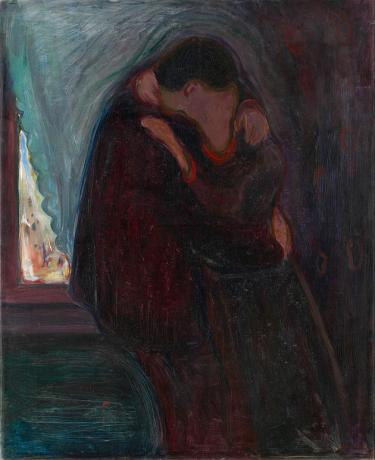
Read too:
- van gogh
- Contemporary art


